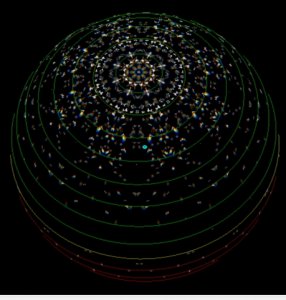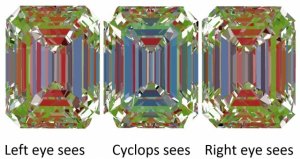- Joined
- May 1, 2008
- Messages
- 3,563
Garry H (Cut Nut)|1423945015|3832589 said:GIA do not have a cut grading system, they have the equivalent of HCA as a rejection system, but they made a mess of their model too because of the limitations of their light box used with a flawed sample of 'popular observers' i.e. dealers. But GIA's system can never ever be rolled out for anything other than round cuts. so it is a rejection system, not anything like a beauty or performance system
Adding to this for casual readers: Obstruction is why the HCA and GIA disagree so much.
The HCA likes shallow combos. But GIA's obstruction model causes dark patterns in many shallow combos, and the system is much more permissive at the deep side. Thus, some GIA EX = HCA FAIR and some HCA EX = GIA GOOD.
Example: Pavilion angle ranges for 61D 56T 34.5CA.
GIA EX = 40.6 - 41.6
HCA EX = 39.7 - 41.0
That's a significant disagreement.
Mass manufacturers will always cut deep to retain more weight from the average rough. That's why HCA-rejected combos exist in abundance. It's a simple numbers game. For big operations, cutting to the deep side of GIA EX is the most profitable plan.
I'm with Karl too. He likes 3 distances. Coincidentally, that's how I train ppl to make comparisons.Garry H (Cut Nut)|1423984694|3832862 said:Bryan I agree with Karl, on both obstruction and binocular vision. Interesting though is that Peter Yantzer explained to me that the leakage patch in the center of many princess cuts disappears with close up stereo vision. One eye sees a bright area and the other eye sees a bright area in the opposing sides - check it. But from further away many stones still show the leakage, so their overly close model does not work always!
AGSL uses 2 at the lab; half-arm and close (30-40deg). Both closer than Garry may like.
I thought I'd add AGSL cut-charts here.
Example: Pavilion angle ranges for 61D 56T 34.5CA.
GIA EX = 40.6 - 41.6
HCA EX = 39.7 - 41.0
AGSL 0 = 40.5 - 41.1
The AGSL cut-charts fall in the middle, omitting shallowest from HCA and deepest from GIA.
*Important disclaimer* That range is only cut-chart data. Unlike the others, AGSL tests every diamond individually. It's therefore possible for some combos outside the above to earn 0, and some inside the above to be penalized. It depends on how all 57 facets work together in specific testing.






300x240.png)